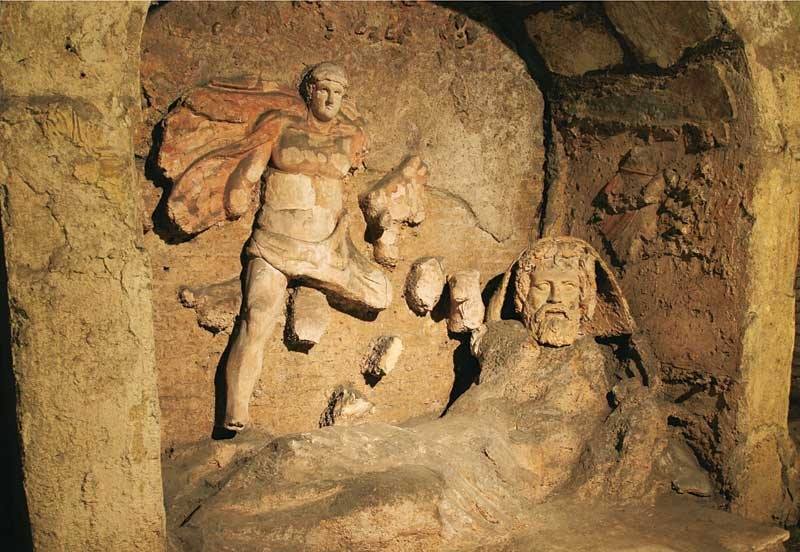Tauroctony of Santa Prisca
The full article is reserved for our members.
Log in or create a free account to access the entire site.
On the r. side of the niche, in stucco the front part of a foreshortened representation of Mithras with a white bull. The bull’s breast and neck and Mithras’ r.h. are preserved as well as the greater part of his flying cloak.
On the l. side of the niche there must have been a representation as well…


